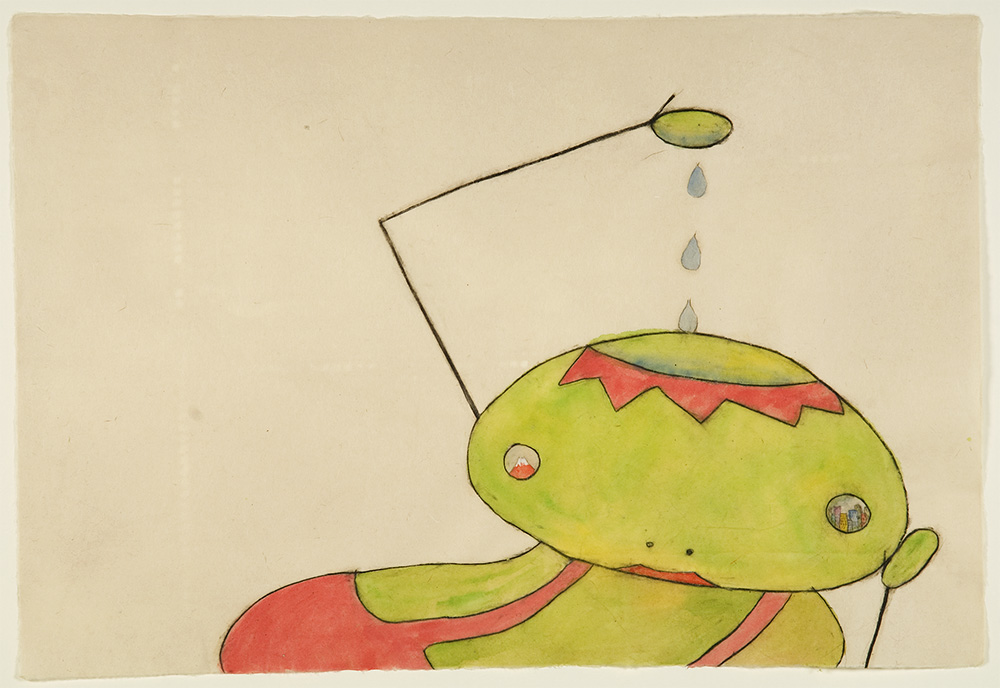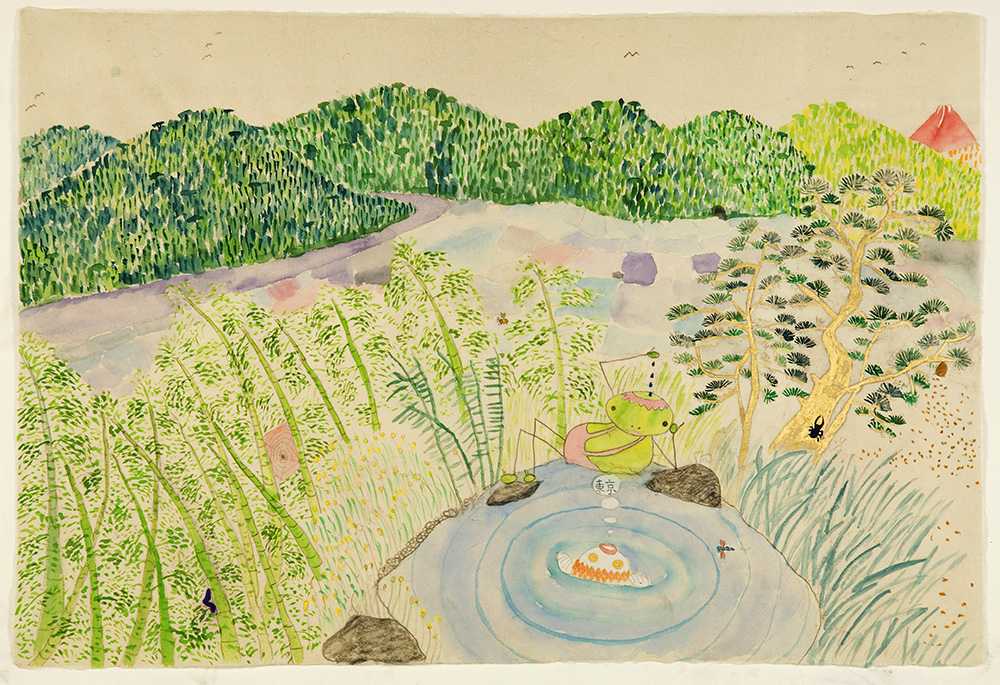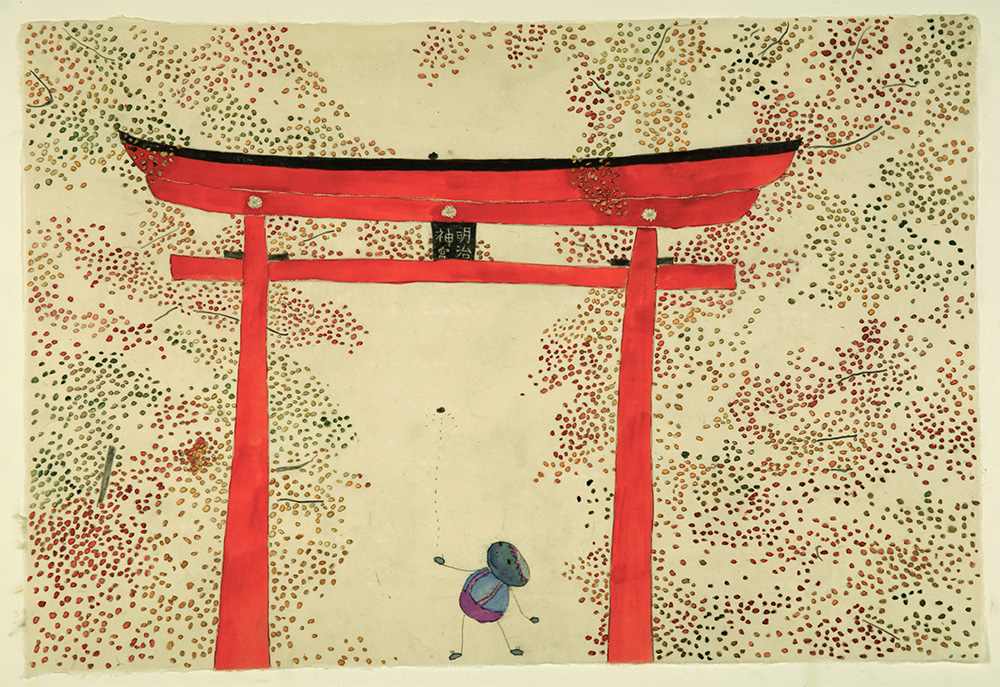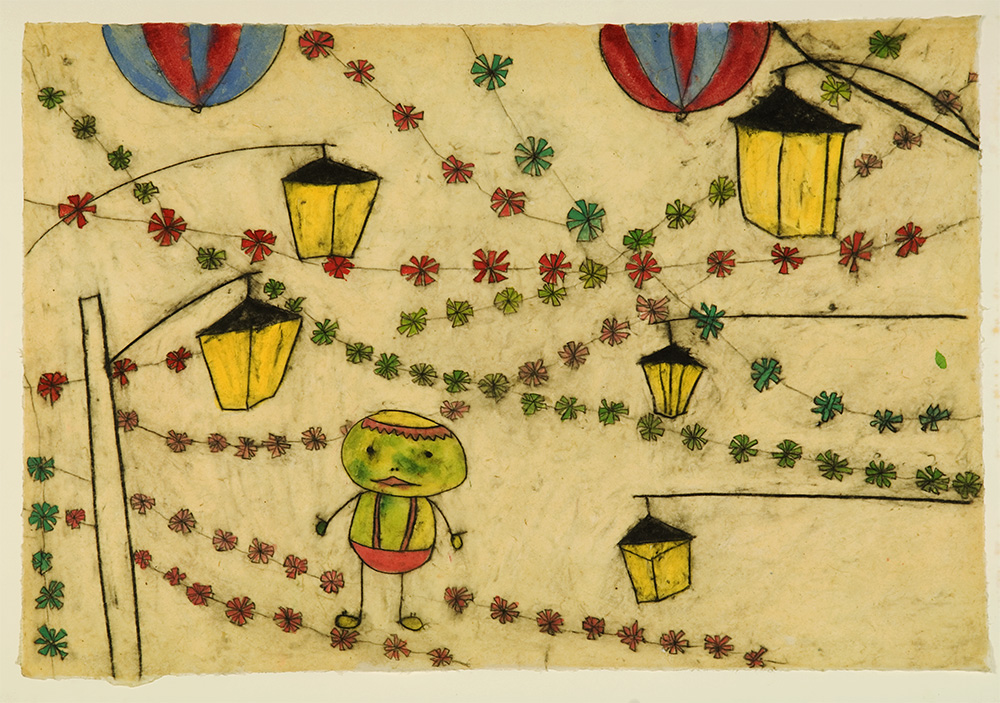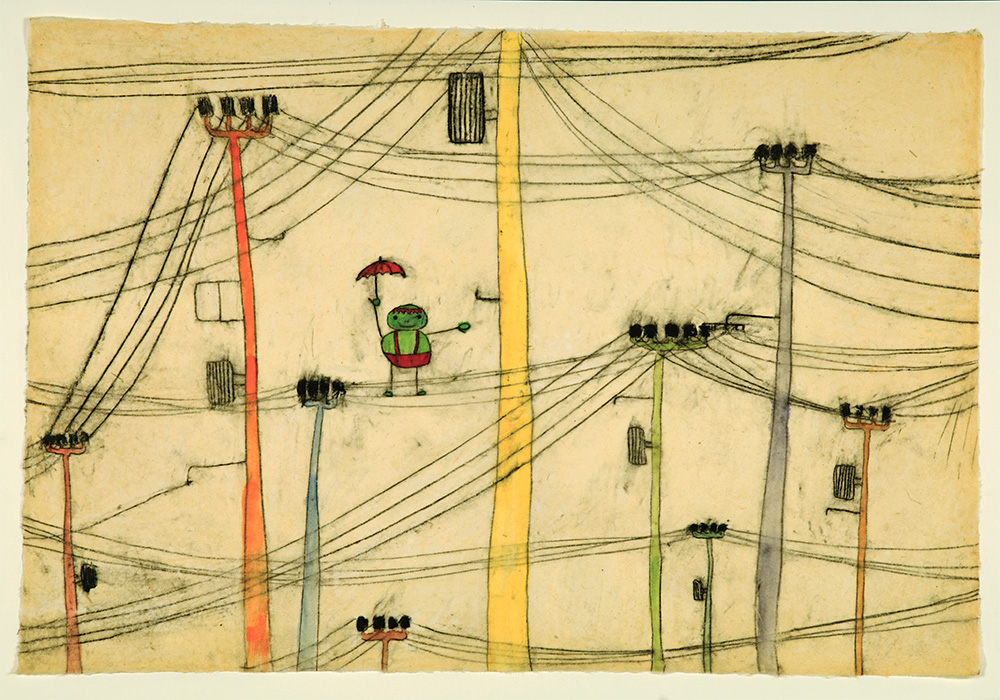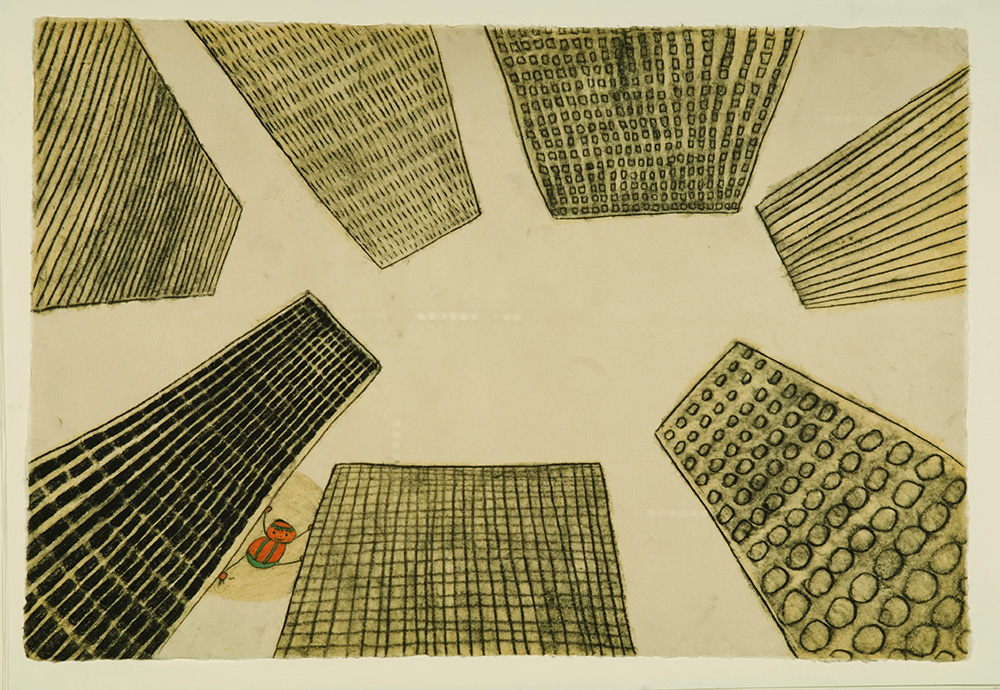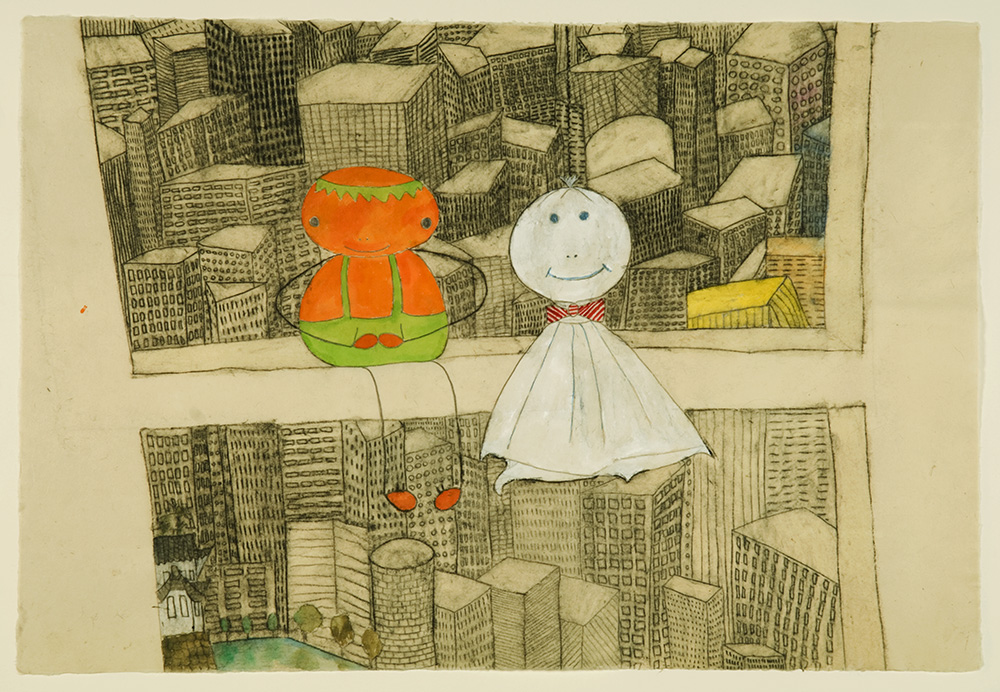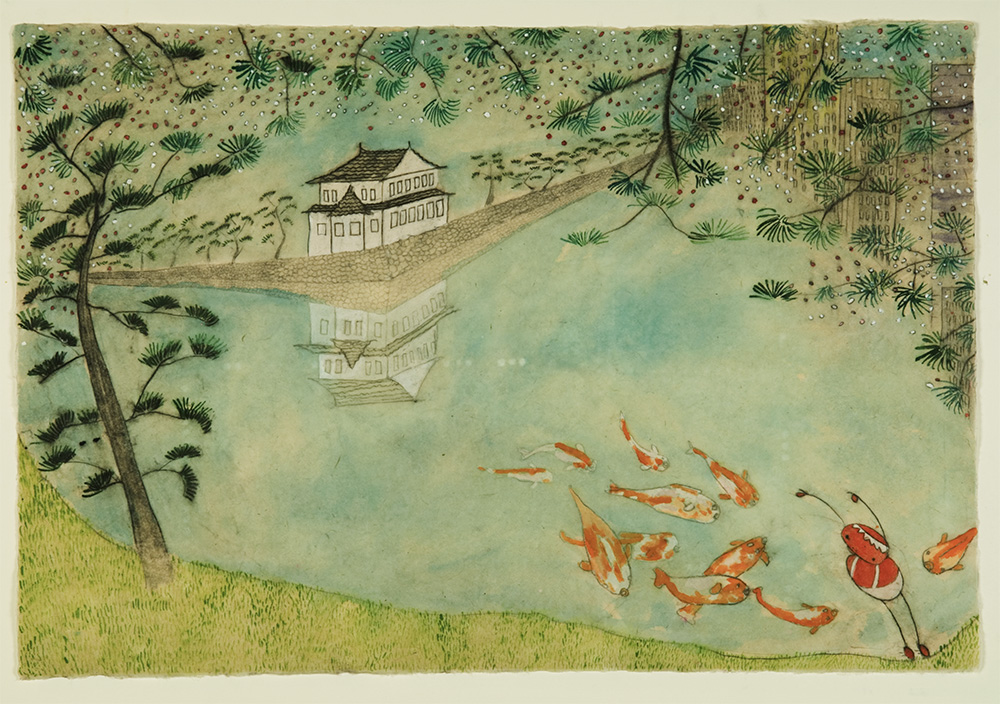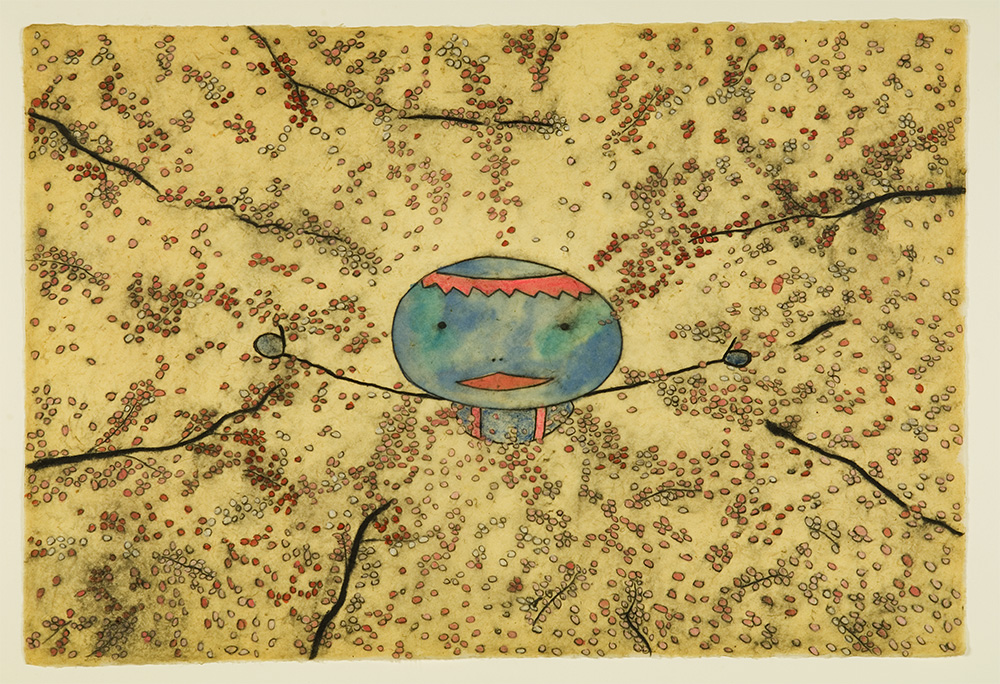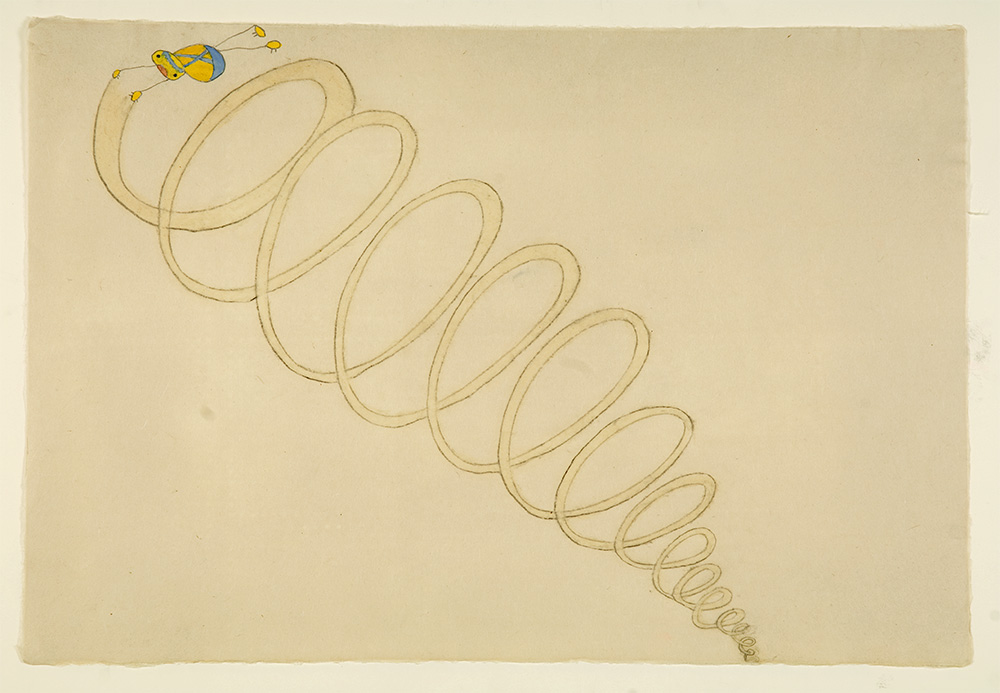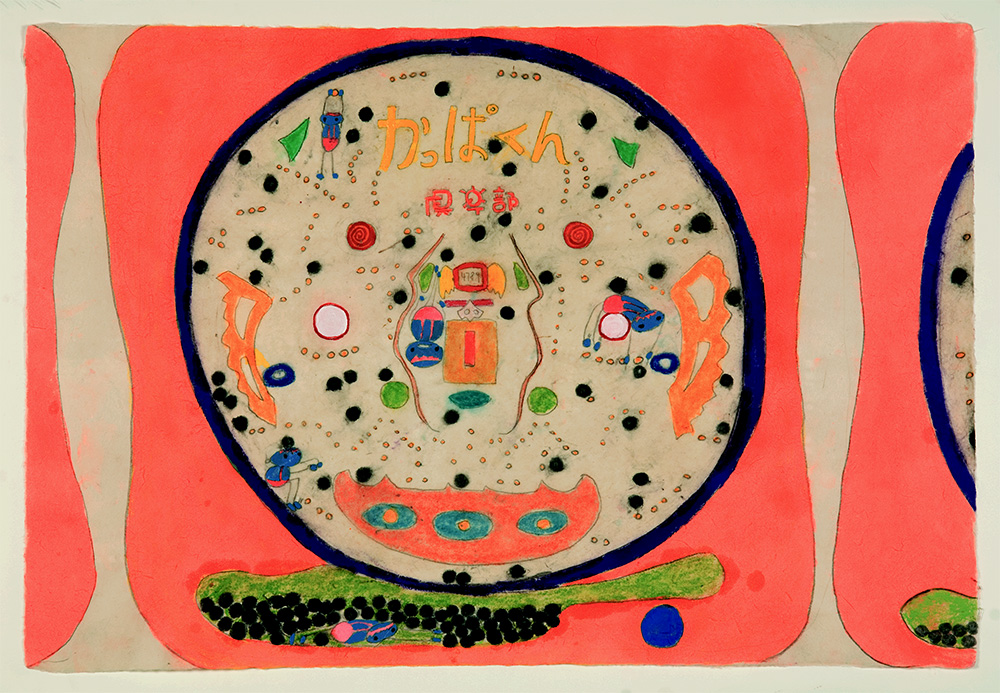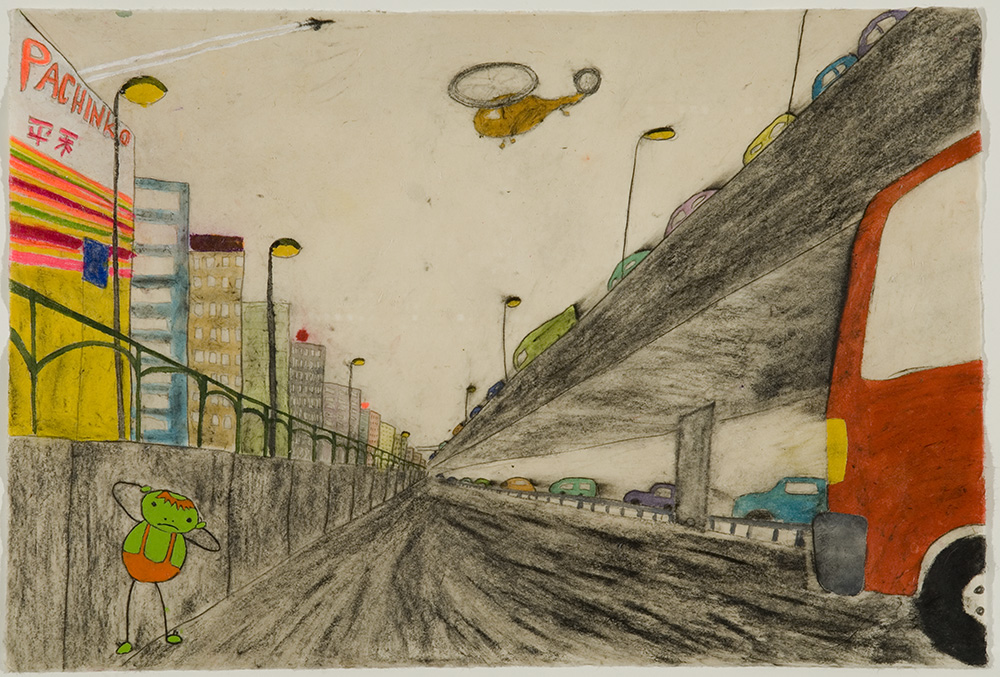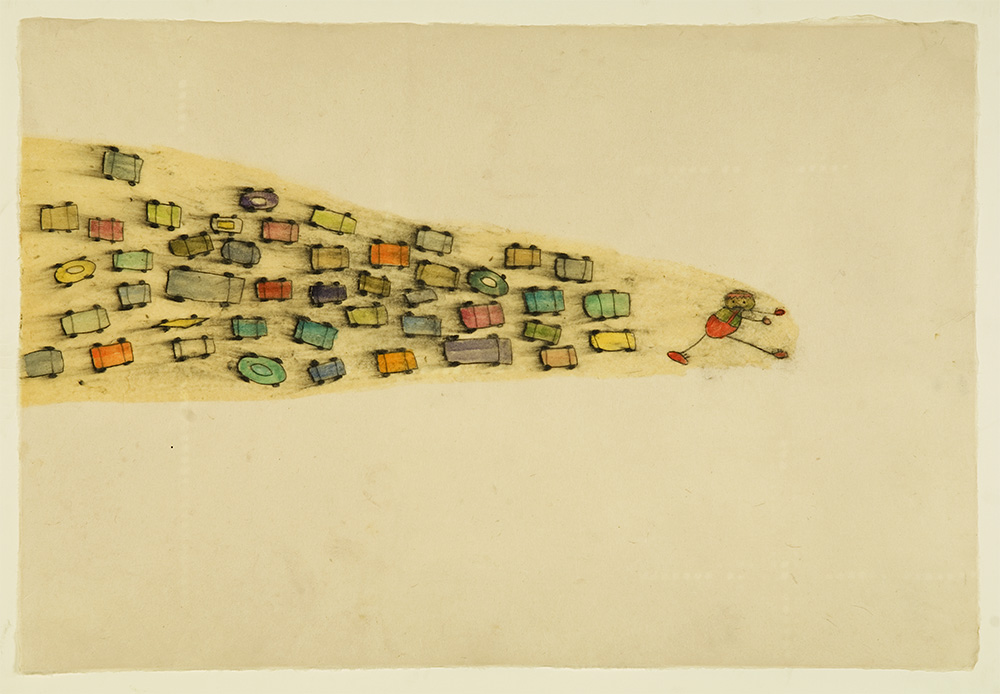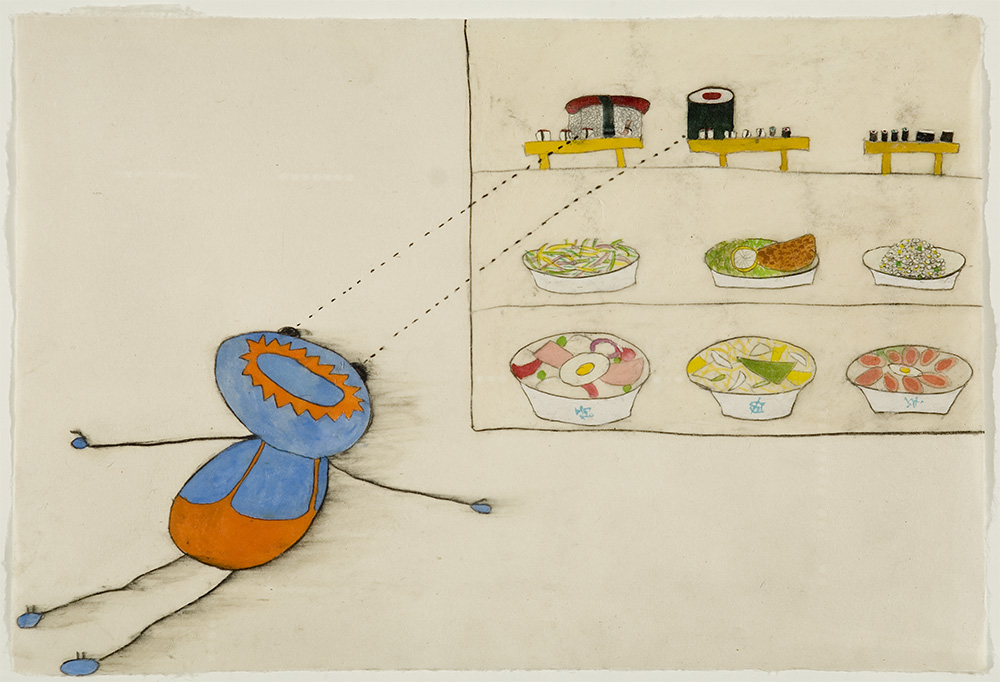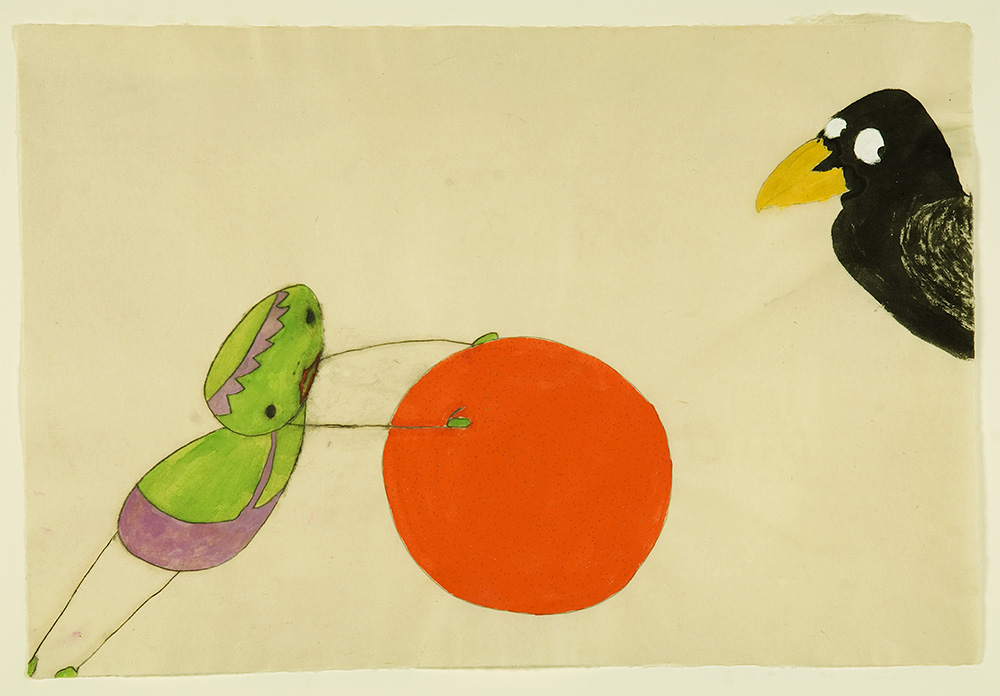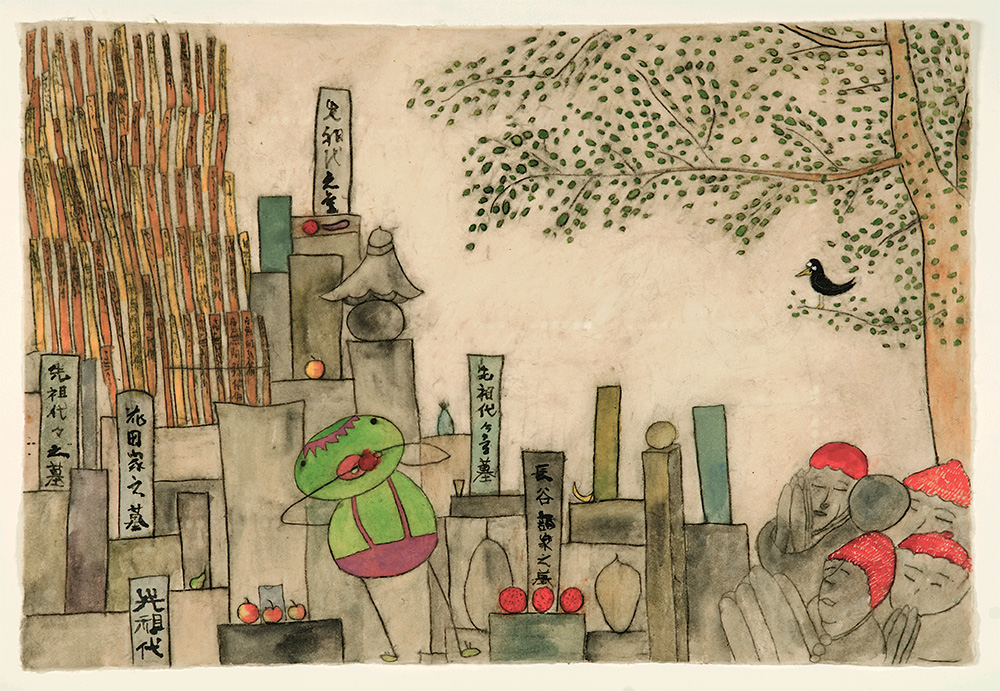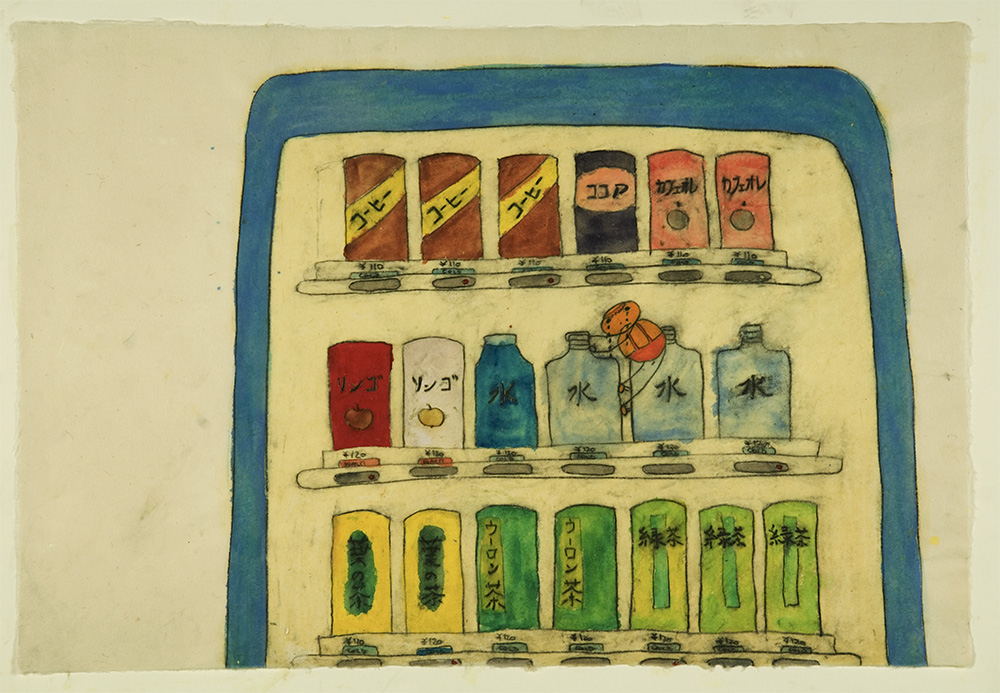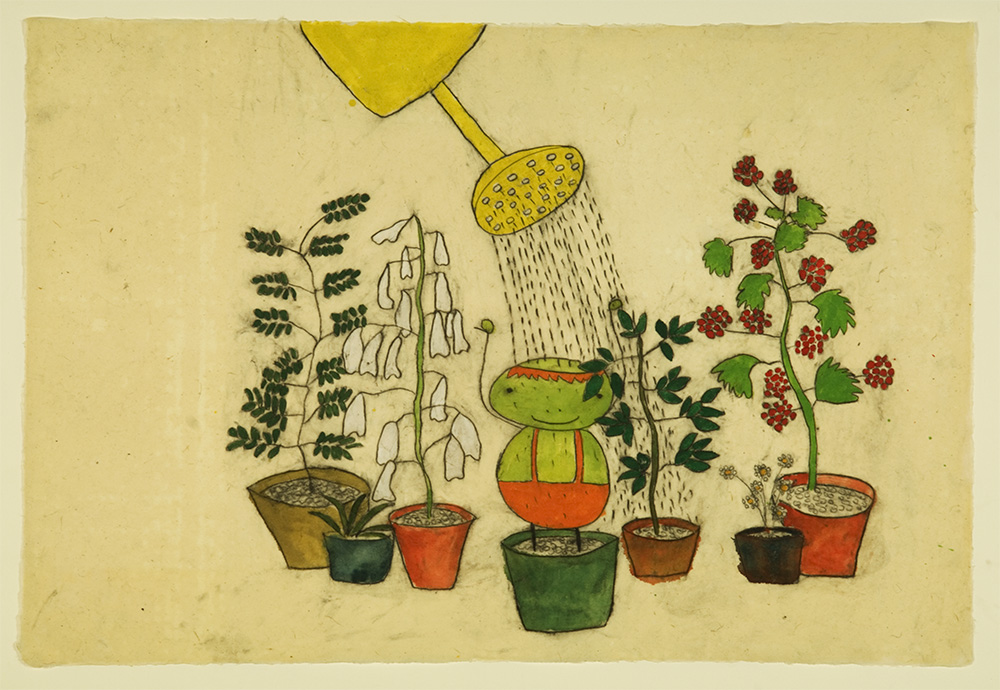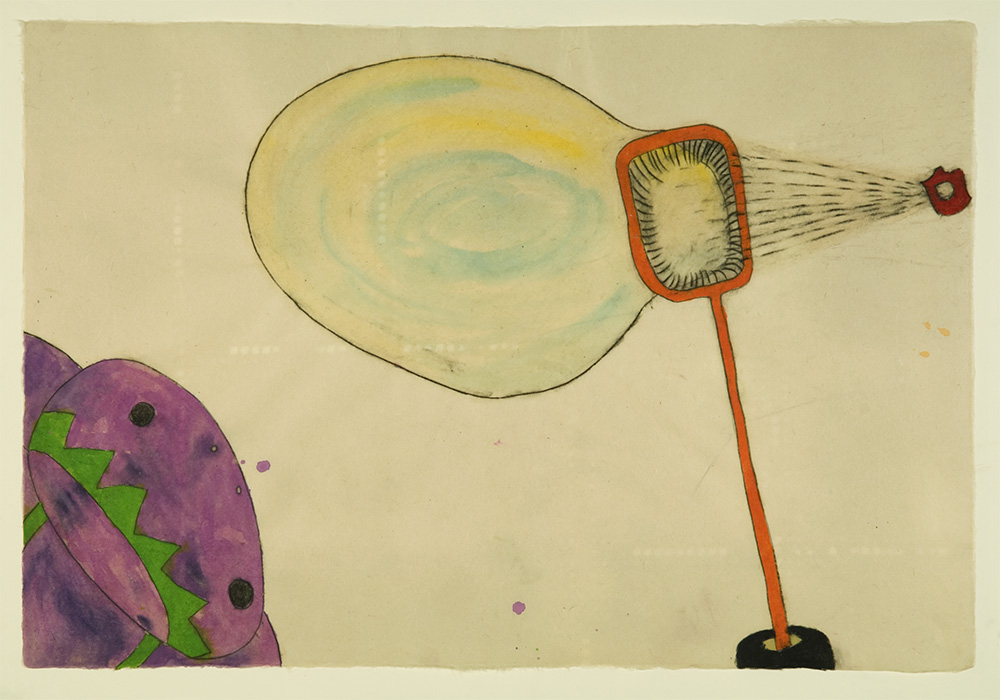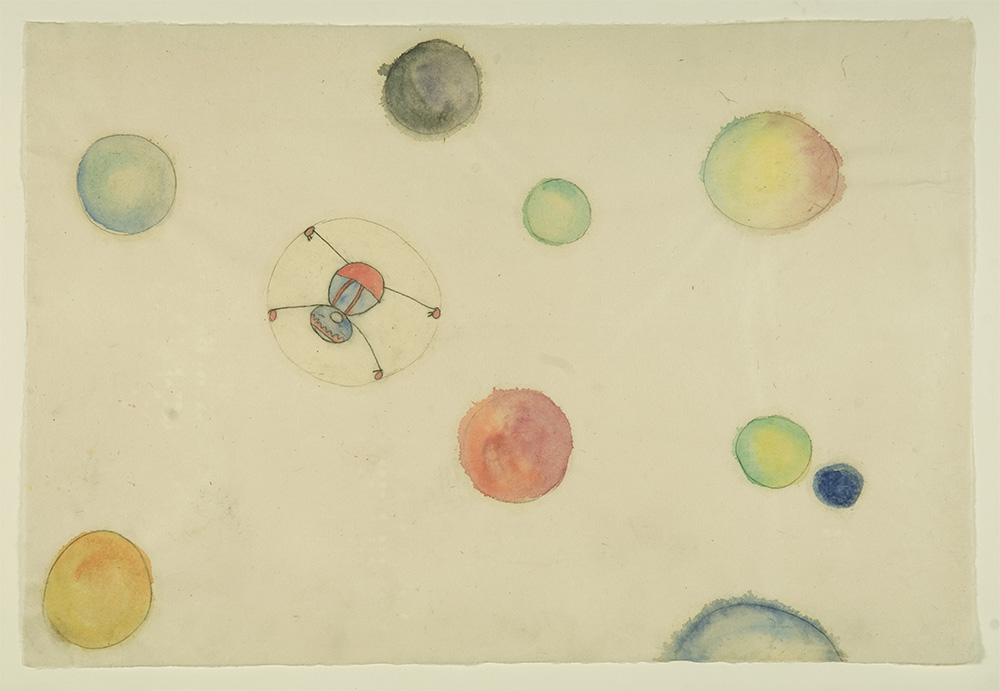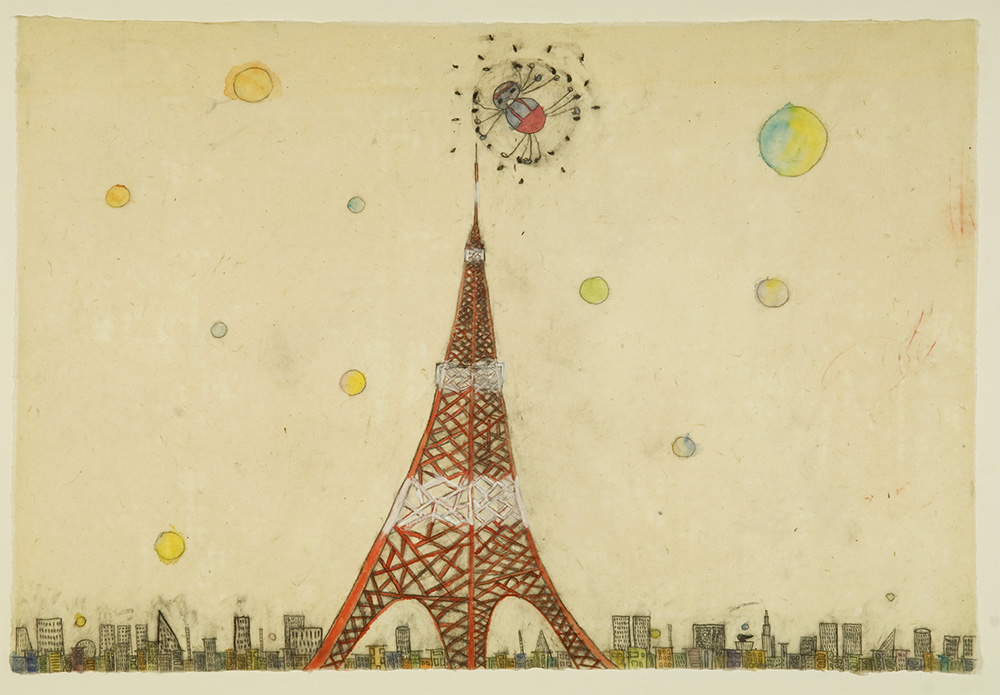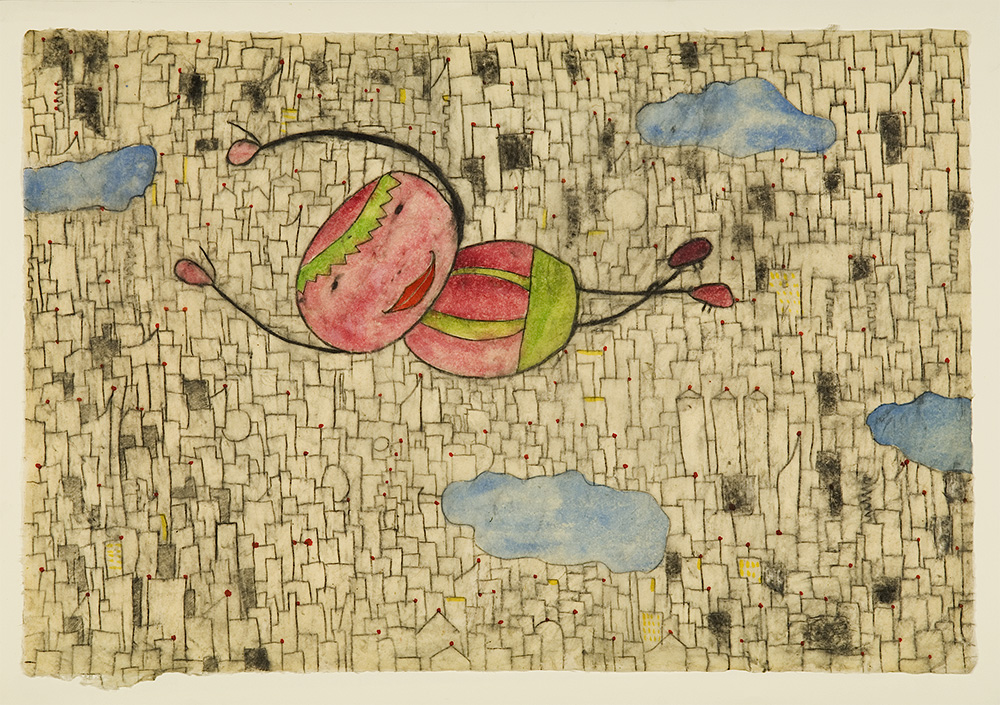27 DRAWINGS, each 93×63 cm, pencil, watercolor, oil stick on Japanese paper
KAPPA kun is a water imp every child in Japan knows. For centuries artists and calligraphers have been depicting the mythological figure – up to our days. The Japanese – old and young – really believe that those water imps happily exist out there in the nature. Kappas punish as well as reward humans for good and bad deeds. Kappas have a “osara” in their head – a hole – that always must be filled with water otherwise they must die…
In “Kappa goes Tokyo” Kappa’s girl friend Koi-chan (carp girl) talks him into visiting Tokyo. He starts out liking the big metropolis since there are so many fun things to discover. Soon troubles start, as he meets all kinds of creatures he never saw before – including millions of other Kappas. His obstacle: where to find water in the city of concrete? After many adventures Kappa kun ends up in a bubble that takes him high up into the sky. At the tip of the Tokyo tower the bubble bursts! Kappa is in shock, but only for a moment, because the water imp learns to fly.
Half of the population of Tokyo was not born in the metropolis – as in any other big city on the globe. People come from the provinces near and distant to seek luck in the big city. As any other big city in the world most of its population comes from the countryside. The moral both in East and West is: Beware of the city! It will not do you any good! If will corrupt you! KAPPA KUN TOKYO HE tries to show exactly the opposite. A creature from the countryside comes to the big city and loves it. Withstanding all hardships he learns how to fly. The moral of this book is: If you move to the city the impossible becomes possible. The city does not destroy you, no, even a creature who lives in the water learns how to deal with another element: it learns how to fly.
KAPPA KUN is a book of freedom, freedom of choice, freedom of will, freedom to find happiness. The book should appeal to half of the population of Tokyo, to half of the population of all major cities in this world – all genders, all ethnical backgrounds, all ages (3- 100). And it has a merit for the West: it can learn a lot about Japanese culture.
かっぱくんは(田舎の素朴な男の子)自然に囲まれて幸せな毎日を過ごしていた。彼の親友である女の子が、ある日、彼に東京に行くことを進める。東京に着いてすぐに、かっぱくんはそこがとっても気に入った。なぜならそこにあるほとんどのものが、彼にとって新しい発見の連続でとにかくそれが楽しかったからである。しかしそこを走る車や、自分と同じ姿の多くのカッパを発見したことを発端にトラブルに巻き込まれていく。彼にとって、最も困難なことは東京で食べるものを見つけること?彼のお皿に必要なお水を手に入れること?
Drawings and the texts were turned into a BOOK available in German language at schlebruegge.com
Below you get to see all the drawings plus 27 sound files in which the author recites the story that comes along with the pictures – in english language – click the red speaker symbols.
